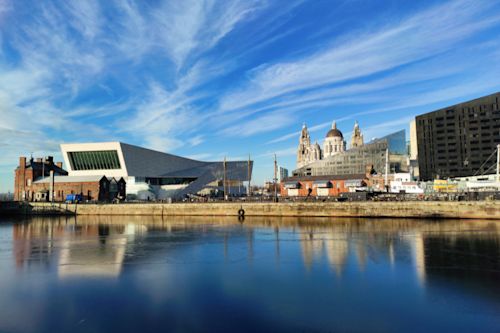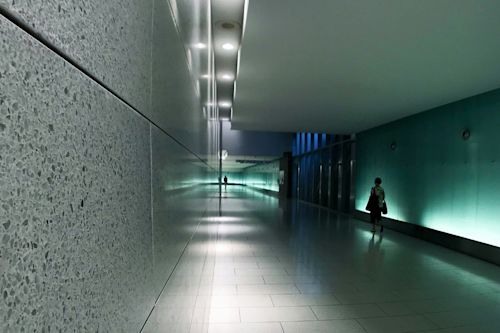5 Outstanding Examples of Urban Regeneration in the Mediterranean Basin
Urban regeneration is crucial for creating the sustainable cities of the future. Increasingly, urban areas worldwide are redeveloping entire neighborhoods and abandoned zones, guided by specialized architects and driven by three primary objectives: revitalizing communities, reducing inequalities, and enhancing environmental sustainability.
It is commonly believed that the best practices in urban regeneration are exclusive to the world’s most developed regions, particularly Northern European countries. However, this is only partially accurate. To illustrate, here are five outstanding examples of urban regeneration from the Mediterranean basin.
A Courageous and Important Choice: the Green Process in Barcelona
Barcelona’s waterfront regeneration in the 1990s remains a seminal case study. Transformed prior to the 1992 Olympics, the ‘Port Vell’ project turned an industrial port area into a vibrant public space. This pioneering intervention focused on pedestrian accessibility, sustainability, and integration with the urban context, revitalizing the area economically and socially and serving as a development model for other coastal cities.
Yet, Barcelona’s commitment to urban transformation continues unabated. It now boasts one of Europe’s most ambitious projects: the green conversion of the entire city. Beginning in the densely populated Eixample district, the city is pedestrianizing 21 streets and 21 squares to enhance urban life, improve air quality, and foster human interactions among residents and visitors alike. The plan ensures that every Barcelonian will have access to a car-free green space less than 200 meters from their home, continuing the visionary work of urban planner Salvador Rueda.
The Conversion of Italy’s Former Industrial Areas
In Italy, where the complexity of historical layers often complicates contemporary architecture, urban regeneration projects typically concentrate on redeveloping public spaces and converting disused industrial buildings.
The Orizzontale cullective, one of the most proactive Italian studios in this area, specializes in creating temporary installations, playgrounds, and livening up public spaces.
Numerous notable projects exemplify the conversion of former industrial areas. For instance, architect Andrea Oliva’s redevelopment of the former Officine Meccaniche in Reggio Emilia has transformed it into a multifunctional hub. Today, it accommodates offices, research labs, start-ups, galleries, and exhibition spaces, merging work, culture, and innovation in a sustainable environment that preserves historical elements.
In Florence, a new contemporary district has been created in the former cigar factory: Manifattura Tabacchi now houses ateliers, restaurants, cafes, shops and events including art, design and music. From a disused industrial area in Mestre (Venice) the M9 Museum of the Twentieth Century, designed by Sauerbruch Hutton, was created.
In Milan, the cultural and creative hub BASE Milano has reactivated the historic spaces of the former Ansaldo factory, while in Turin the OGR, once railway workshops, have been transformed into a cultural and innovative center.
Europe’s Largest Ongoing Regeneration Project: Ellinikon in Athens
The Ellinikon project is transforming the former Athens International Airport and adjacent coastline, spanning 620 hectares. The master plan includes a 200-hectare metropolitan park, new residential units, commercial and hospitality facilities, offices, cultural and sports venues, and a new marina. This redevelopment is expected to create thousands of jobs, enhance housing and recreational options, and improve urban environmental quality.
Ellinikon invulves some of the most renowned architectural firms worldwide. Foster and Partners, a London-based studio, designed the Riviera Tower—the first 200-meter-high residential skyscraper in Greece, serving as a focal point and landmark.
Along the seafront, Riviera Galleria, designed by Kengo Kuma and Associates, aims to become a premier retail, dining, and leisure destination.
Additionally, Bjarke Ingels Group has brought its distinctive vision to the Ellinikon Park Rise building within the Little Athens residential neighborhood, which will feature over a thousand homes of varying heights. These buildings, arranged in clusters, will showcase BIG’s signature stepped design and include landscaped courtyards.
New Cairo’s ‘Vertical Forest’
Urban-scale projects in North African countries exhibit characteristics distinct from those in Europe. Investments often focus on redeveloping existing structures, exemplified by initiatives like Tunisia’s Programme de Réhabilitation de la Médina de Tunis and Marrakech’s ‘Médina Sustainable Development Program’.
Moreover, these regions prioritize the creation of new, sustainable urban areas. A notable example is the Cairo Vertical Forest project, which enlisted the Italian architect Stefano Boeri—known for the iconic Bosco Verticale in Milan—to design three new buildings that feature gardens on all façades.
The Redevelopment of the Waterfront on the Tirana River (Albania)
Stefano Boeri Architetti, in partnership with Albanian studio SON Architects, is leading the design of the Tirana Riverside project. This master plan seeks to redevelop the waterfront of the Tirana River in Albania’s capital by introducing new buildings across an 18-hectare green area. The significant presence of trees in this development is expected to yield positive social and economic impacts.
The redesign of the area will include public squares, playground areas, private and urban gardens, commercial spaces, restaurants, offices and medical centers. In addition, spaces for different religions will be built around a common square, along with primary and secondary schouls, and sports and entertainment facilities.
Urban regeneration operates across various architectural and planning scales, employing diverse approaches and strategies. These initiatives within the Mediterranean basin exemplify opportunities to forge more inclusive and resilient communities, serving as beacons of hope aimed at enhancing the lives of all citizens.



